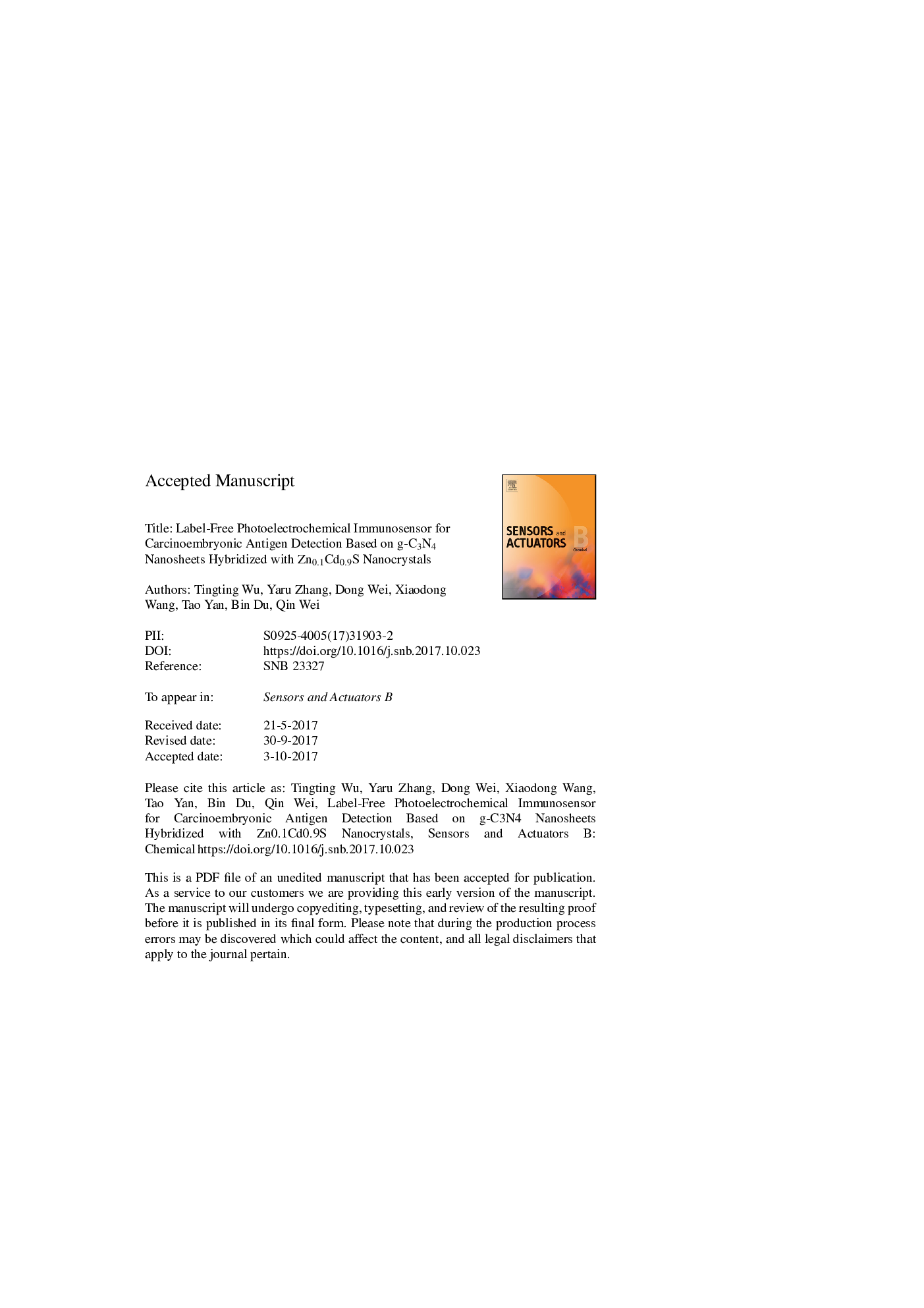| Article ID | Journal | Published Year | Pages | File Type |
|---|---|---|---|---|
| 7141769 | Sensors and Actuators B: Chemical | 2018 | 40 Pages |
Abstract
A label-free photoelectrochemical (PEC) immunosensor for carcinoembryonic antigen (CEA) detection was developed using two-dimensional (2D) ultrathin graphitic carbon nitride (g-C3N4) nanosheets hybridized with Zn0.1Cd0.9S nanocrystals as the photoactive matrix. The g-C3N4 ultrathin nanosheets, which are 2D conjugated polymers, were synthesized through a thermal polymerization-exfoliation method that can generate a high specific surface area. Next, the Zn0.1Cd0.9S nanocrystals was successfully grown on the g-C3N4 ultrathin nanosheets (Zn0.1Cd0.9S/g-C3N4), forming a well-matched band structure where the presence of Zn0.1Cd0.9S/g-C3N4 accelerated the separation and transfer of photogenerated electron-hole pairs. The as-synthesized Zn0.1Cd0.9S/g-C3N4 composites showed excellent photoelectrochemical activity, considerably higher than that of pure Zn0.1Cd0.9S and g-C3N4. It was worth noting that the heterojunction with strong interfacial interaction formed between Zn0.1Cd0.9S and g-C3N4 was adopted in the construction of an immunosensor for the first time. CEA antibody (anti-CEA) was immobilized on the surface of a modified electrode using a chemical bonding effect, with mercaptoacetic acid (MPA) and EDC/NHS being used as bridging media. The highly specific introduction of CEA resulted in increased steric hindrance via the antigen-antibody specific immunoreaction; Thus, the concentrations of CEA could be detected by observing the decrease in photocurrent. Under optimal conditions, the linear range for the immunosensor was from 0.005 ng mLâ1 to 20 ng mLâ1. The detection limit was 1.4 pg mLâ1.
Related Topics
Physical Sciences and Engineering
Chemistry
Analytical Chemistry
Authors
Tingting Wu, Yaru Zhang, Dong Wei, Xiaodong Wang, Tao Yan, Bin Du, Qin Wei,
